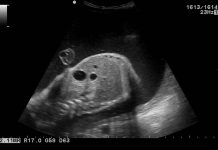Neonatal Sepsis, is a common infection that affects newborns. It is an invasive type of bacterial infection affecting the blood stream and exhibits similarity to infections such as meningitis, pneumonia, and gastroenteritis. Neonatal sepsis is known to be the highest causing factor of new born mortality and still birth. It is the reason of about 40-50% of total new born deaths worldwide.
Read More: 11 Early Signs of Neonatal Sepsis
Types of Neonatal Sepsis
Neonatal Sepsis is of two types.
- Early Onset Sepsis (EOS).
- Late Onset Sepsis (LOS).
In early onset sepsis, new born is affected with sepsis within 72 hours of birth meanwhile on late onset sepsis, the new born will be affected with sepsis after 72 hours of birth. If the child is affected with Early Onset Sepsis then probably the child may have got it from mother. This type of sepsis is the most dangerous disease and is caused due to infection and bacteria.
Neonatal Sepsis generally doesn’t exhibit symptoms and makes it even hard to recognize. So it is important to be extra careful after delivery. Neonatal sepsis needs proper initiation of treatment and the slightest delay in treatment make it harder to treat later. Antibiotic therapy must be given to the infants who are affected by sepsis.
Reasons for Neonatal Sepsis
1.EOS
- Contact with micro-organisms in vagina.
- Due to infected amniotic fluid before delivery.
- Due to Maternal Sepsis.
- Exposure to organisms to infants after delivery.
- Group B Streptococcus (GBS) and Escherichia coli are also stated as main reason for the cause of EOS by US National Institute of Child Health and Development
2.LOS
- Nosocomial infection.
- Coagulase negative Staphylococci, these are the main reason for the cause of LOS.
- Chest drains, central lines and catheters are another cause for LOS
- One third of LOS is caused due to Gram Negative organisms
- Staphylococcus speciesand Group B Streptococcus
Treatment for Neonatal Sepsis
The treatment is mainly focused on fighting and flushing out the infection from infant’s body. A pre-emptive treatment of giving Intravenous liquid must be done even before the infant is diagnosed. Once the cause is known then particular targeted treatments must be given. It is important to take immediate treatment as soon as sepsis is identified in infants due to their immuno suppressant feature. The antibiotics should be given as soon as diagnostics is performed.
Read More: 11 Common Neonatal Infections New Moms Should Know
Rationale behind Treatment of Neonatal Sepsis
The treatment must be given aiming at the systemic effects of the disease. Intravenous nutrition and cardiopulmonary support is required in the starting stage of the disease. As soon as the health condition of the infant is stabilized the further treatment can be started.
1} Anti-viral and anti-biotic treatment
If infection is viral, acyclovir an antiviral medicine is used. If the infant is struggling from temperature instability then thermo regulatory with incubator support is required. As the infant reaches stable point, parental contact is must. The antibiotics used for EOS are combination of intravenous gentamicin and benzylpenicillin.
The reason for the cause of late onset Sepsis are Gram Negative organisms but about one seventh are caused due to Staphylococcus species and Group B Streptococcus. Surgical consultation for central line placement may be necessary in some cases where infants required prolonged IV anti microbial therapy sepsis. If peripheral IV access cannot be maintained then above procedure is helpful.
2} Surgical Procedure
Surgical drainage is necessary if abscess is present. Anti-biotic treatment alone isn’t effective and the peripheral IV cannot be penetrated through the abscess. Granulocyte transfusion is a therapy used in treating neonatal sepsis.
If the sepsis is severe, the baby will require constant monitoring and the treatment should be mainly focused on stabilization of baby’s breathing and heart rate. If the blood pressure of the infant is low, the IV fluids must be given and then a vasopressor medication must be given.
The antibiotics commonly used in treating Neonatal Sepsis are gentamicin, metronidazole, piperacilin, cefotaxime, vancomycinn, cefotaxime, and ampicillin. The type of anti-biotic given is selected by considering the situation of the infant and based on the problem he has been facing.
Prevention and Proper Care
Infants are sensitive and their immune system is not so strong to stand against those infections. Although the advanced scientific treatments are in hand, not everyone can afford it. People who can afford prefer to put baby through so much pain. So it better to take care of the infant and avoid those infections rather than curing it. A saying “Prevention is better than cure” is something that everyone should follow. Take precautions to avoid Sepsis rather than curing it.
References
https://emedicine.medscape.com/article/978352-treatment
https://www.ncbi.nlm.nih.gov/pmc/articles/PMC3228399/













